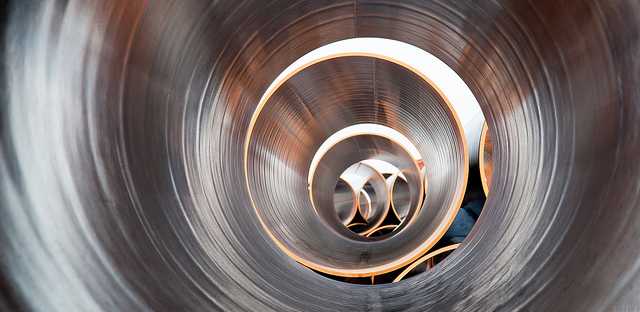Oil Energy Realities for Western Europe (part 2)
The future oil supply constraints for the Western European OECD countries are rarely discussed in public. While my last entry presented the “known facts” about the topic, this blog post deals with the “known unknown” and the “unknown unknown” boundary conditions for the near future oil consumption in Western Europe.

Considering the importance of oil for our current globalized way of life, it seems highly relevant to understand the “known” facts (see part 1 of the two-part blog), study what we know we don’t know (the “known unknowns”) and be prepared for the unknowns we don’t know of yet (“unknown unknowns”), which will constrain the future oil consumption especially in Western Europe (EU + Norway + Switzerland).
The “unknown” factors
Russia provides currently about 40% of the Western European oil needs and a considerable fraction of this oil flows through pipelines crossing the politically unstable Ukraine and Belorussia. Past predictions [4], based on official Russian resource data, estimated that the aging oil fields of Russia will reach a plateau of 9.5-10 mbd (million barrels of oil per day) around the year 2009/10, followed a few years later by a decline of about 5-6% per year, similar to the one observed by the mature oil fields in the North Sea. So far oil production in Russia has continued to increase and reached a rather stable plateau value of about 10.5 mbd since 2011.
According to the latest announcement from the Russian energy minister [5], it is hoped that new fields might keep the current production at the current level for some more years. However, it is important to realize that the majority of these new oil fields (and pipelines) are located in Eastern Siberia. As a consequence the new oil production will be exported directly to China and Japan. It might thus be a good idea to accept the IEA figure predicting that the Russian exports to Western Europe will decline from 4.3 mbd (2012) to 2.9 mbd by 2018 (a decline of about 6% per year). In order to prepare for what is coming, it should be vital for Western Europe to obtain more precise data about the production status and remaining resources in the Western Siberian oil fields.
According to the IEA data, the oil export decline from Russia cannot be compensated by other sources. In the contrary, the IEA data [3] suggest that all other crude oil imports will decline from 5.3 mbd (2012) to 4.4 mbd (2018). In detail the imports from Middle East OPEC countries will decline from 1.6 mbd (2012) to 1.3 mbd (2018), and from Africa, mainly Algeria, Libya and Nigeria, from 3.7 mbd (2012) to 3.1 mbd (2018). Again, the IEA assumes that resource depletion is not the reason for this decline.
In summary, combining the “known unknowns”, the Western European countries should start to prepare their populations for the unavoidable and already ongoing decline in oil imports. We will thus be confronted with an oil consumption decline of about 5% per year during the next 5 years.
The “unknown unknown” factors
Unfortunately, new and unpredictable “unknowns” might reduce the oil imports to Western Europe even faster than the IEA estimates. Essentially two points need to be considered here: (1) When will the final decline of the currently active oil fields in Western Siberia and Algeria start and (2) how will “political turmoil” in oil exporting countries lead to unpredictable supply disruptions? Examples from the past years are (civil) wars in Libya and Syria, the so called Arab spring revolutions and the still ongoing crisis in the Ukraine. Other “unpredictable” events like huge earthquake disasters or the consequences of further global economic problems and national priorities of the bigger European countries will only lead to further oil supply problems for Western Europe.
There is some hope that better scientific resource data might allow to predict the natural extraction decline of mature oil fields more accurately. However, the “political crisis” scenarios are by definition outside of the natural science and technology domain and need to be studied and understood within the domain of political and social sciences.
Prepare for the transition
In summary, it seems that governments within the Western European and the other Eurasian countries would be wise to accept that we are in the same boat and start to use the known facts about the future oil supply to prepare our societies for the coming transition away from our oil dependence. One might hope that an open und realistic discussion about the transition options and the required actions on how to reduce our oil dependence might reduce the associated difficulties of this transition. Those, who experienced the “four car free Sundays” during the first oil crisis in 1973, might even remind us about the positive aspects of using highways for biking excursions and parties.
References
[1] Schweizer Bundesamt fur Energie, externe Seite Energiestatistiken
[2] BP Statistical Review of World Energy 2013, externe Seite Report
[3] IEA, Medium-Term Oil Market externe Seite Report 2013, Trends and Projections to 2018, and especially page 13 in externe Seite here
[4] Different estimates for the future Russian oil production are reviewed by D. Cohen (2006) externe Seite www.theoildrum.com/story; S. Foucher (2011) externe Seite hereand R. Koppelaar (2012) externe Seite here.
[5] See externe Seite Reuters, Jan 21, 2014

Kommentare
Noch keine Kommentare